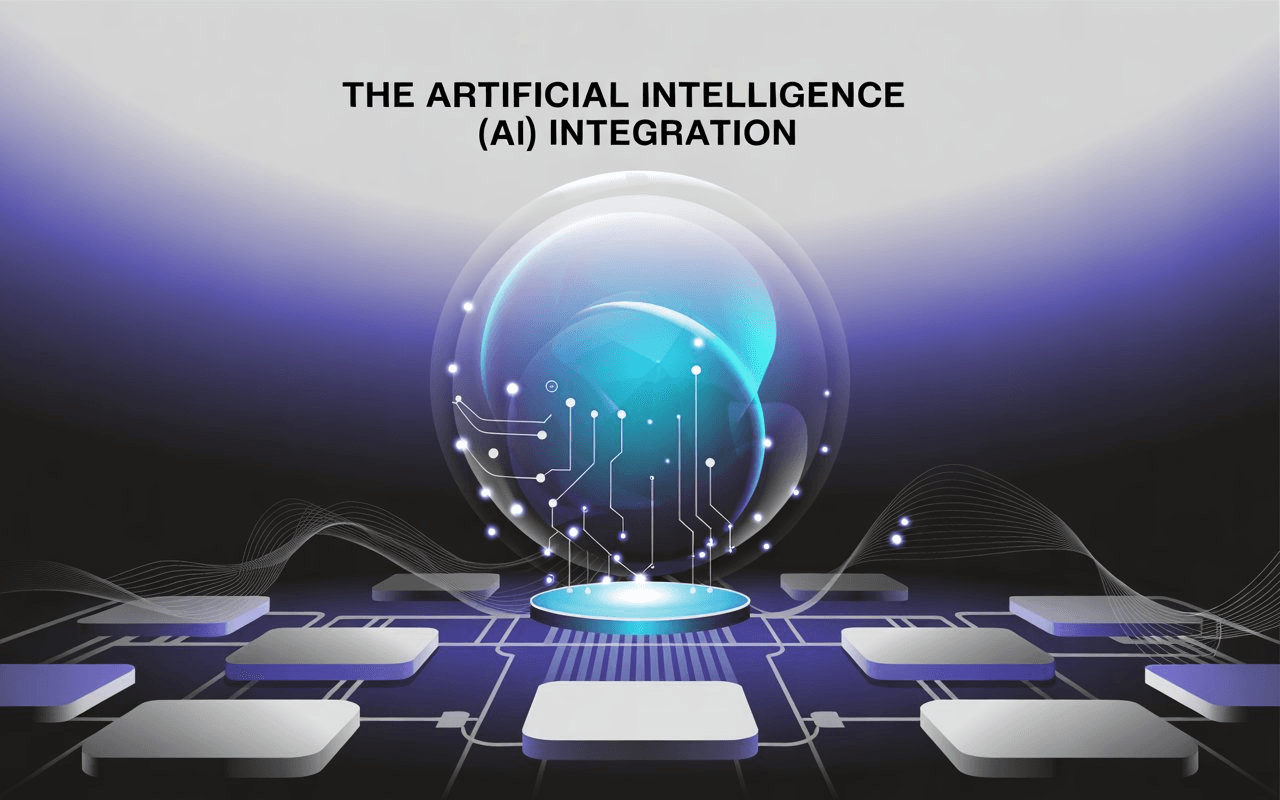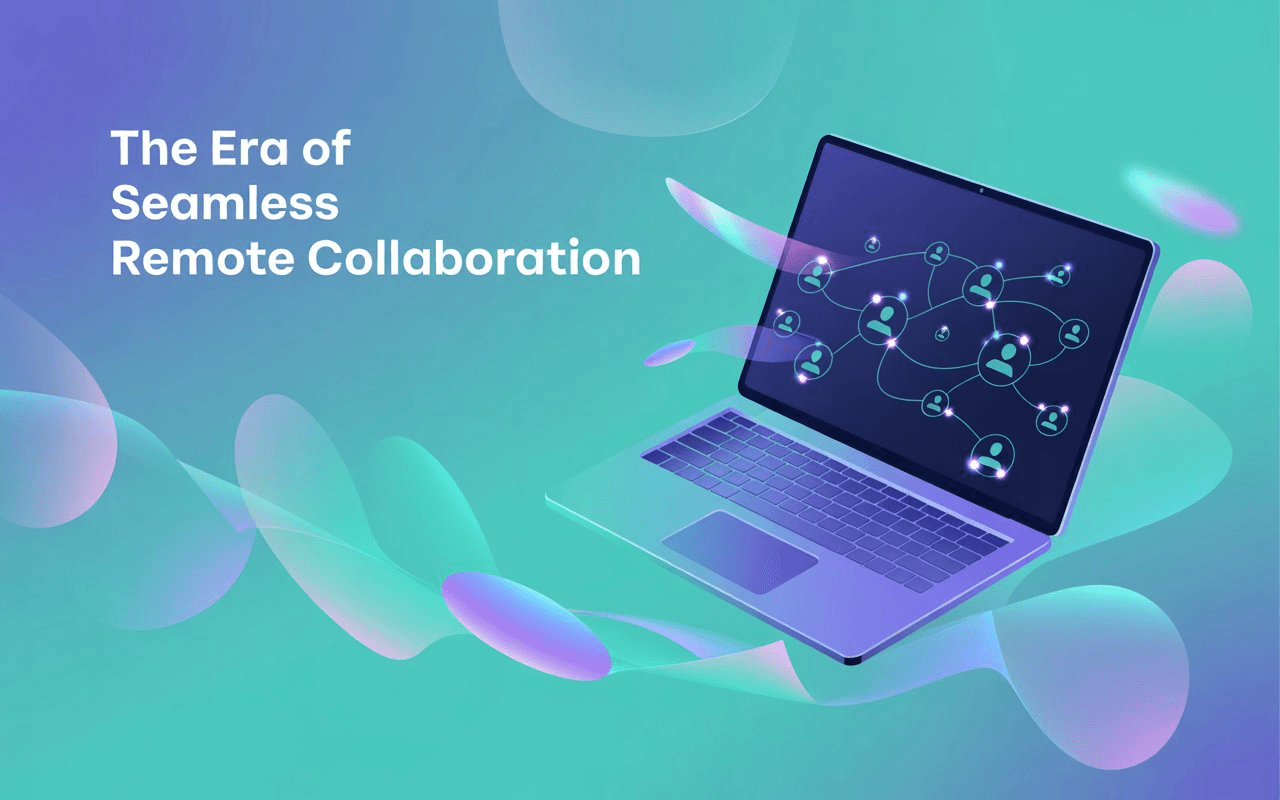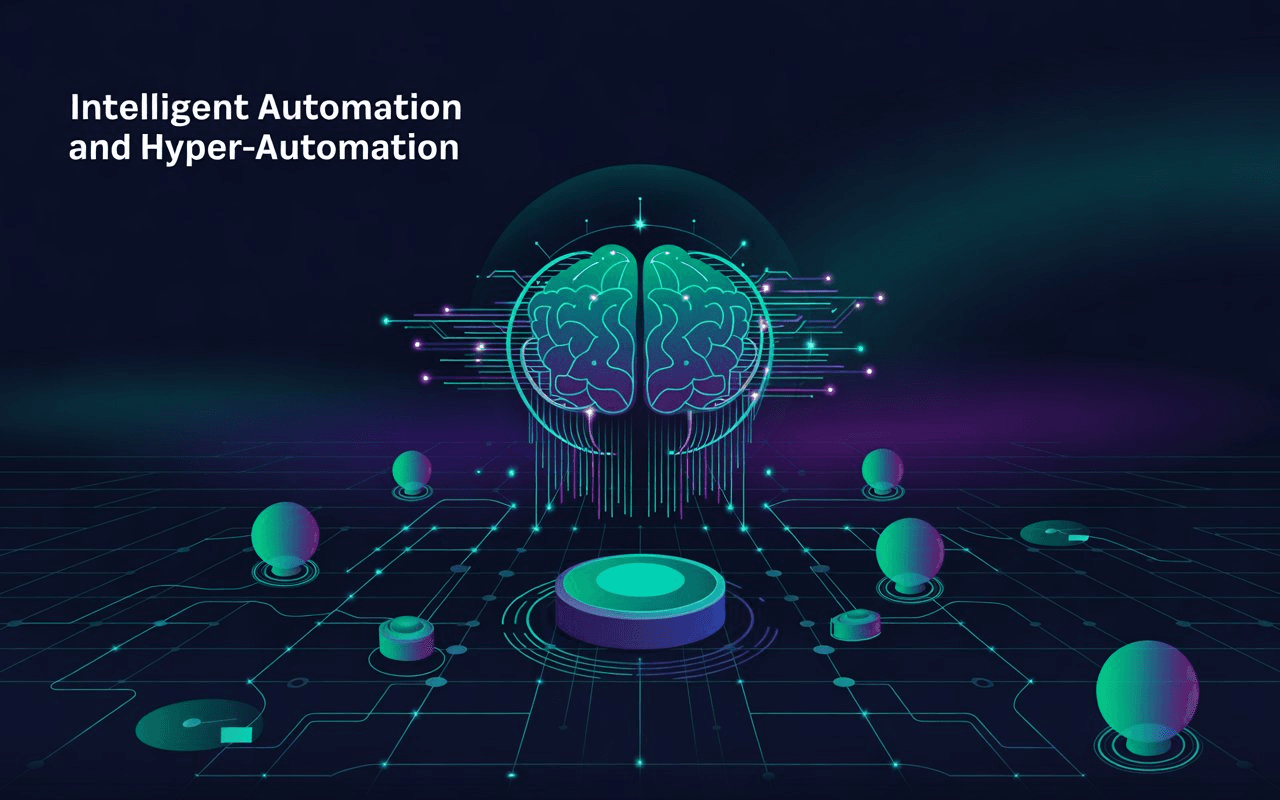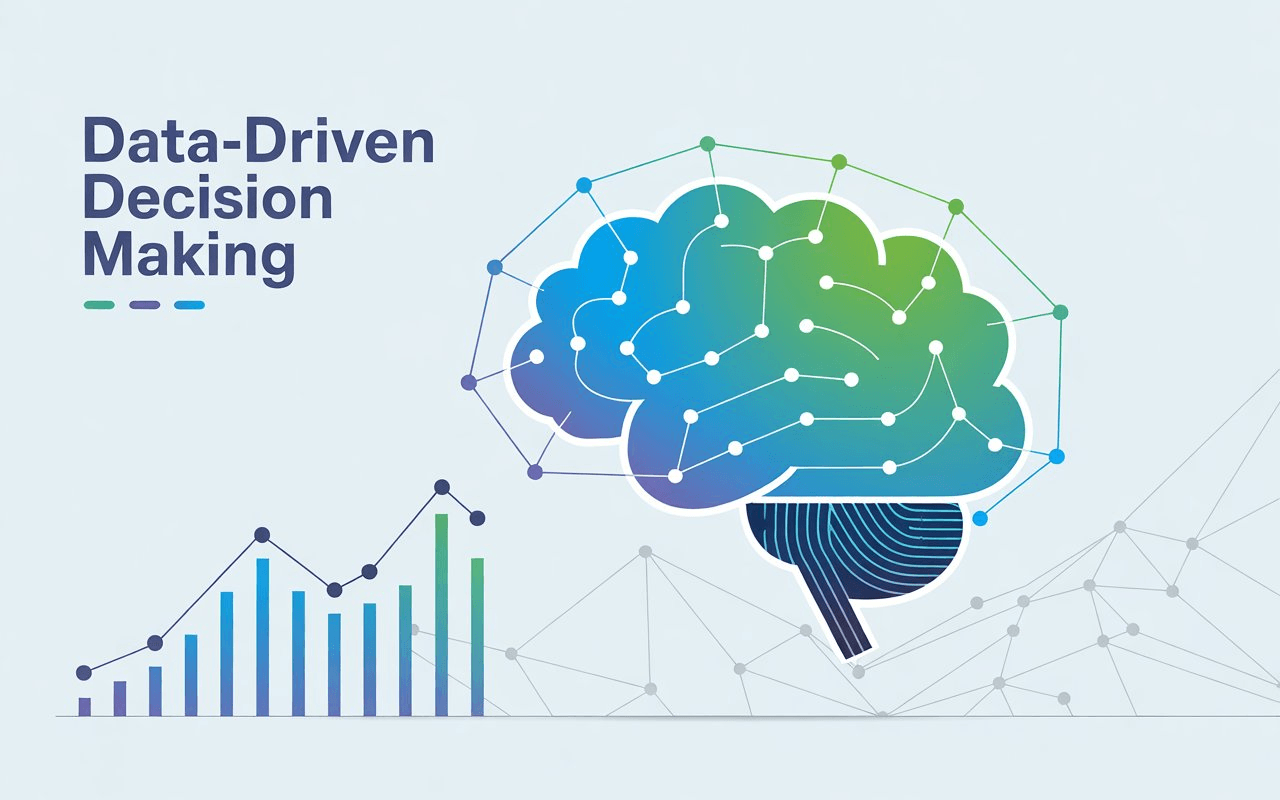5 trends shapping innovation
- Author
- Published on
In a world where change is the constant, standing still is the fastest way to fall behind. The landscape of business, technology, and society is shifting at an unprecedented pace, driven by powerful new forces. For organizations and individuals alike, innovation is no longer a buzzword it's the core engine for survival and growth. Understanding the trends shaping this evolution is the first step toward building a resilient and forward-thinking future.
This guide breaks down the five most critical innovation trends that are redefining industries and explains how you can harness them to your advantage.
1. The Artificial Intelligence (AI) Integeration

What It Is: Artificial Intelligence has moved from the realm of science fiction into our daily operations. Beyond simple algorithms, we're now seeing the widespread integration of generative AI (like ChatGPT), machine learning, and predictive analytics into core business functions. AI is no longer just a tool for data scientists; it's becoming an accessible co-pilot for marketers, developers, and strategists.
Why It Matters: AI is automating complex tasks, generating creative content, and uncovering insights from vast datasets that would be impossible for humans to analyze. This leads to hyper-personalized customer experiences, smarter supply chains, and accelerated product development. For any business, leveraging AI is becoming a key differentiator for efficiency and competitive advantage.
Real-World Relevance: A retail company uses AI-powered analytics to predict which products will be in high demand, optimizing inventory and reducing waste. Meanwhile, its marketing team uses generative AI to create targeted ad copy for different customer segments in a fraction of the time.
2. The Era of Seamless Remote Collaboration

What It Is: The global shift to remote and hybrid work has catalyzed a revolution in collaboration tools. This trend goes far beyond basic video conferencing. It encompasses integrated digital ecosystems platforms like Slack, Asana, and Miro that combine communication, project management, and creative brainstorming into a single, seamless virtual workspace.
Why It Matters: This future of work allows companies to tap into a global talent pool, breaking down geographical barriers. It fosters a more flexible and inclusive work culture, boosting employee satisfaction and productivity. Effective remote collaboration tools ensure that teamwork, creativity, and company culture can thrive, regardless of where employees are located.
Real-World Relevance: A software development company with team members across three continents uses a centralized project management platform to track progress, a virtual whiteboard tool to design new features collaboratively, and asynchronous communication channels to accommodate different time zones.
3. Sustainability as a Core Innovation Driver
What It Is: Sustainability has evolved from a corporate social responsibility checkbox into a fundamental driver of business innovation. This trend involves developing products, services, and processes that are environmentally friendly and socially responsible. It includes everything from creating circular economies (where waste is minimized) to investing in renewable energy and building transparent, ethical supply chains.
Why It Matters: Today's consumers and investors increasingly favor brands that demonstrate a genuine commitment to sustainability. Innovations in sustainable tech not only help in protecting the planet but also open up new markets, reduce operational costs through efficiency, and enhance brand reputation.
Real-World Relevance: An apparel brand innovates by using recycled materials and a closed-loop manufacturing process, reducing water usage by 90%. They use blockchain technology to provide customers with a transparent view of their supply chain, building trust and loyalty.
4. Intelligent Automation and Hyper-automation

What It Is: This is the next level of automation. While traditional automation focuses on repetitive, rule-based tasks, intelligent automation (IA) and hyper-automation use AI and machine learning to handle more complex, dynamic workflows. It’s about creating an ecosystem where digital bots and AI work alongside humans to optimize entire business processes from end to end.
Why It Matters: Hyper-automation drastically increases operational efficiency, reduces human error, and frees up employees to focus on strategic, creative, and high-value work. This digital transformation allows businesses to scale faster, improve service quality, and become more agile in response to market changes.
Real-World Relevance: A financial institution uses hyper-automation to process loan applications. A bot first extracts customer data from forms, an AI model then assesses risk based on predefined criteria, and the system automatically flags complex cases for human review, reducing approval times from days to hours.
5. Data-Driven Decision Making

What It Is: While using data isn't new, the ability to collect, process, and analyze massive amounts of information in real-time is a modern phenomenon. This trend is about embedding data at the core of every strategic decision. Businesses are using advanced analytics, business intelligence (BI) tools, and data visualization to move from intuition-based choices to evidence-backed strategies.
Why It Matters: Data-driven organizations understand their customers better, identify market opportunities faster, and operate more efficiently. Making decisions based on hard evidence minimizes risks and maximizes the chances of success. In a competitive market, the company that best understands its data is the one that wins.
Real-World Relevance: An e-commerce platform continuously analyzes user click-stream data, purchase history, and on-site behavior. The insights gained are used to dynamically adjust the website layout, personalize product recommendations, and optimize pricing strategies for maximum sales.
The 5 Key Innovation Trends at a Glance
| Trend | Key Takeaway & Summary | Real-World Example | Rating |
|---|---|---|---|
| AI Integration | AI, especially generative AI and machine learning, is now a core business co-pilot. It automates complex tasks, creates content, and provides deep insights, offering a major competitive edge. | A retail company uses AI to predict product demand and generative AI to create targeted ad copy for different customer segments. | 5/5 |
| Seamless Remote Collaboration | Moving beyond basic video calls, this trend involves integrated digital ecosystems (like Slack, Asana) that support a global talent pool and foster a flexible, productive virtual work culture. | A global software company uses project management platforms and virtual whiteboards to coordinate projects across different continents and time zones. | 4.5/5 |
| Sustainability as a Core Innovation Driver | No longer just a CSR metric, sustainability is a core driver of innovation. It attracts modern consumers and investors while creating new markets and reducing costs through ethical, efficient practices. | An apparel brand uses recycled materials and blockchain for a transparent supply chain, building customer trust and loyalty. | 4.5/5 |
| Intelligent & Hyper-automation | This is the next level of automation, using AI and digital bots to handle complex, end-to-end business workflows. It boosts efficiency, cuts errors, and frees employees for high-value strategic tasks. | A financial institution automates its loan processing from data extraction to risk assessment slashing approval times from days to hours. | 5/5 |
| Data-Driven Decision Making | This is about leveraging advanced analytics and Business Intelligence (BI) tools to make strategic decisions based on real-time evidence, not just intuition. This leads to better customer understanding and minimized risks. | An e-commerce platform analyzes user click-streams and behavior in real-time to personalize product recommendations and optimize pricing. | 5/5 |
How to Harness These Innovation Trends:
A Practical Guide**
Adopting these trends can seem daunting, but it’s an achievable journey. Here’s a simple roadmap to get started:
- Assess and Align: Begin by evaluating which of these innovation trends aligns most closely with your business goals and challenges. Don't try to adopt everything at once. Ask: "Where can AI deliver the most immediate value?" or "Could automation solve our biggest operational bottleneck?"
- Foster an Innovative Culture: Technology is only as good as the people who use it. Encourage a culture of curiosity, experimentation, and continuous learning. Create a safe environment where employees feel empowered to try new things and learn from their failures.
- Start Small, Scale Smart: Launch a pilot project to test a new technology or process on a small scale. This allows you to learn, gather data, and prove the concept's value before committing to a large-scale investment.
- Invest in Skills and Tools: Equip your team with the right tools and, more importantly, the right training. Upskilling your current workforce to work with AI, data analytics, or new collaboration platforms is one of the most effective investments you can make.
- Measure and Iterate: Define clear metrics for success before you start. Continuously measure the impact of your innovation initiatives. Use the data you gather to refine your approach and make informed decisions about where to invest next.
Conclusion: Adapt Today, Thrive Tomorrow
The future of technology and business is not a distant destination; it's being built right now by these powerful trends. Embracing AI, fostering collaboration, championing sustainability, leveraging automation, and making data-driven decisions are no longer optional strategies for the ambitious they are essential for relevance.
The key takeaway is that innovation is not a one-time project but a continuous mindset of adaptation. By understanding these forces and taking deliberate steps to integrate them, you can position your organization and your career to not just survive the future, but to shape it.
Frequently Asked Questions
Our Services
Generative AI & LLM Innovation
Don't just read.
Let's work together. Build smarter.
Recent Blog Posts
AI Agents and Google Workspace Flows: The Future of No-Code Automation is Here
AI agents inside Google Workspace are flipping automation on its head. With Google Workspace Flows powered by Gemini, teams can build intelligent, no-code workflows that reason, analyze, and execute multi-step tasks across Gmail, Sheets, Drive, and more.
Beyond BaaS: Appwrite's Developers' Cloud The Single Platform for the Entire Product Lifecycle
Appwrite’s new Developers’ Cloud goes beyond BaaS, offering one unified platform to Imagine, Build, Deploy, Observe, and Protect apps. It cuts tool fragmentation, speeds delivery, and gives dev teams a single home for backend, frontend, monitoring, and security.
Amazon Web Services Quick Suite:AI-Powered Insights and Automation.
Amazon Web Services (AWS) just dropped Quick Suite, an AI-powered workspace that fuses business intelligence, generative AI, and no-code automation. It’s built to help teams instantly turn insights into action, all inside one smart, connected ecosystem.
Google Unveils VEO-3: Next-Gen AI Video Model
Google's Veo 3.1, an optimized upgrade to its flagship AI video model, has been released via the Flow AI filmmaking platform. Veo 3.1 strategically positions itself as a professional-grade tool against OpenAI's Sora 2 by focusing on an extended runtime of up to 60 seconds and a breakthrough Spatio-Temporal Audio Coupling Algorithm for native audio synchronization.